Some days, it seems that the only thing to stay the same is change. Luckily, that’s just the way Walt Disney liked it. It’s the reason that, among all the wonders at Disneyland during his lifetime, his friends and family say he singled out one attraction as his favorite, proclaiming that it should never cease operation. And fifty years later, it hasn’t… not for long, at least.
That’s what our Modern Marvels series is for: chronicling the complete, in-depth histories of today’s masterpiece attractions; living legends that are renowned the world over. Already, we’ve told fan-favorite stories of Disney’s most spectacular dark ride ever, Mystic Manor; taken the streets of New York to join The Amazing Adventures of Spider-Man; faced Imhotep’s curse on Revenge of the Mummy; scaled to the frigid heights of Expedition Everest, and so many more. And now, our most magnificent Modern Marvel yet joins the collection…
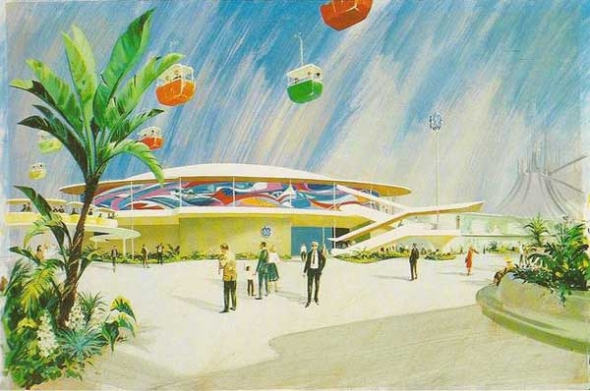
More than five decades after its opening, Walt Disney’s Carousel of Progress is still ever-turning toward a “Great, Big, Beautiful Tomorrow.” But for all its longevity, this “revolutionary” attraction has never stayed put for too long… From unexpected origins in New York, a cross-country rebuild at Disneyland, and a final flight to its current Floridian home, today we’ll trace the in-depth story of this Modern Marvel and watch as Tomorrowland (and the Walt Disney Company) changed around it.
And before we head off, remember that you can unlock rare concept art and audio streams in this story, access over 100 Extra Features, and recieve an annual Membership card and postcard art set in the mail by supporting this clickbait-free, in-depth, ad-free theme park storytelling site for as little as $2 / month! Become a Park Lore Member to join the story! Until then, let’s start at the beginning…
The optimist
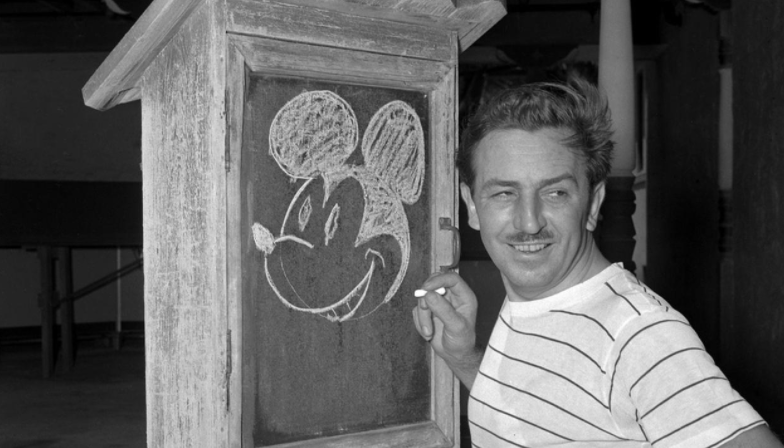
Walt Disney passed away nearly sixty years ago. That makes it quite a testament to his legacy that most people alive today have a pretty good idea of who he was.
Of course, there’s also the much more interesting – and much less straightforward – question: what was Walt Disney? Sure, he was an artist, animator, voice actor, filmmaker, and producer; he was a businessman; a visionary; a dreamer. But to hear his friends and family say it, Walt was one thing above all else: an optimist.
Dedicated to ideals of American enterprise and industry, Walt was an idealist and a futurist particularly enamored with the idea of progress. From his early days integrating new technologies and art forms into animation, to his revolutionary Disneyland with its unprecedented design by filmmakers and its industry-changing attractions… It seemed that the idea of “what could be” drove Walt in every field he conquered.
It’s often said that on Walt’s dying day, he was still dreaming, but bigger: urban design, mass transit, and his Experimental Prototype Community of Tomorrow. Those closest to him say that, lying in his hospital bed, he pointed up to the grid of ceiling tiles, using it to visualize the layout of his E.P.C.O.T. city.
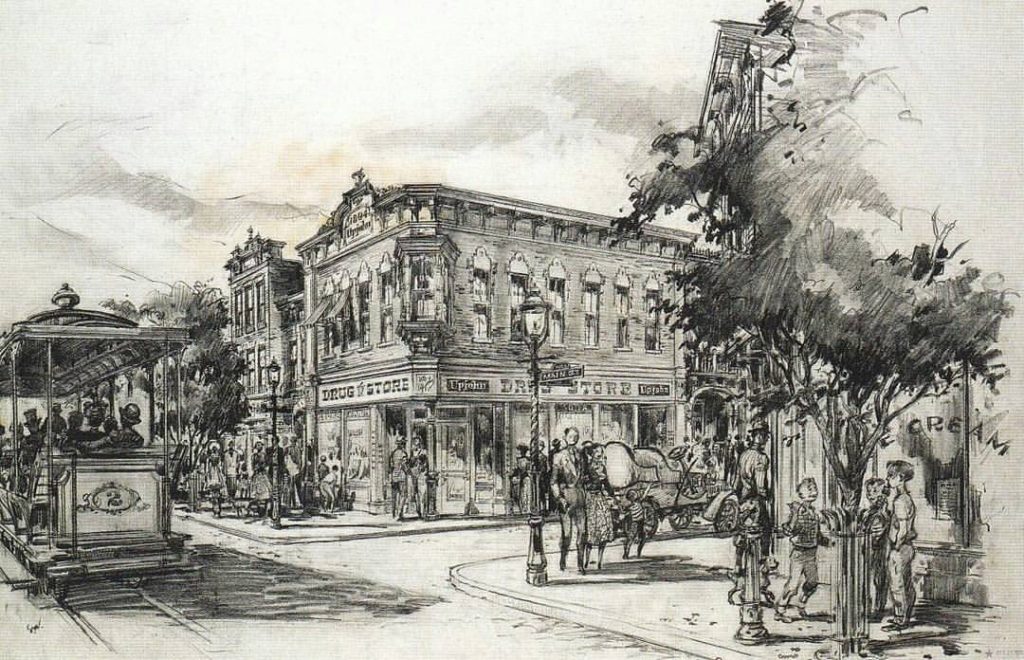
And make no mistake: Walt’s continuous contemplation of progress was embedded deeply in the DNA of Disneyland. It’s no coincidence that Main Street, U.S.A. is forever frozen at the turn of the 20th century, immortalizing the brief, fleeting moment when the gas lamp and the electric lightbulb coexisted; it’s no accident that Frontierland and its idling speed and storied foundation stands opposite Tomorrowland with its “new frontiers in science, adventure, and ideals.”
Disneyland was dedicated to “the ideals, the dreams, and the hard facts that have created America;” a living testament to the worlds of “yesterday, tomorrow, and fantasy” that the American experience revolves around. And that reverence to progress is what inspired one of Walt’s first ideas to expand the still-new Disneyland…
Edison Square
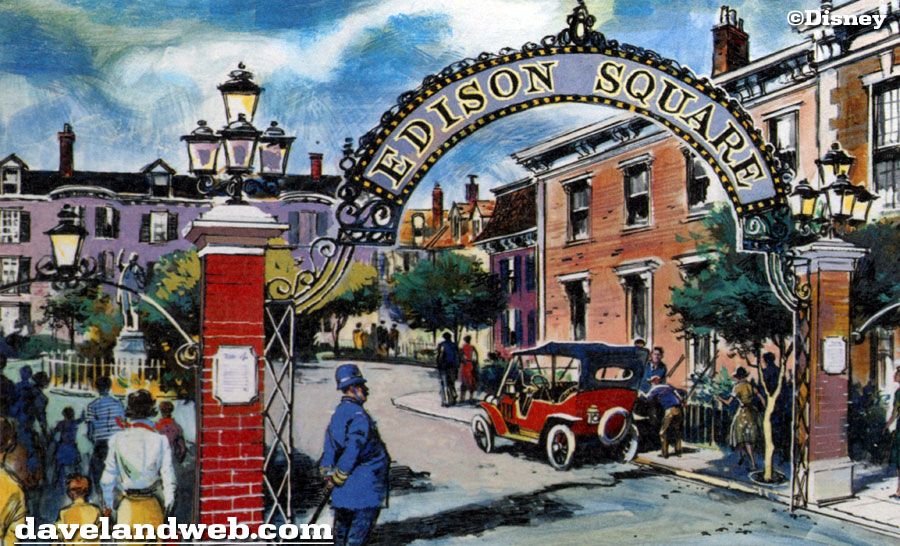
In the early years after Disneyland’s 1955 opening, plans were already in progress for the new park’s first growth spurts. Especially given Walt’s penchant for finding underutilized square footage, it’s no surprise that he quickly narrowed in on an expansion plot: the underutilized space wedged between Main Street and Tomorrowland, practically perfect for a new extension bridging the two.
True to Walt’s intention, Main Street would continue to represent the snapshot moment in American history when the horse-drawn streetcar and the new automobile shared the road. But now, those old clip-clopping carriages would continue down Main Street toward the Hub while – with the sound of their “ah-ooh-gah” horns – the motor cars would break away and pass under a wrought-iron archway aglow with the warm hum of the new electric lightbulb reading: EDISON SQUARE.
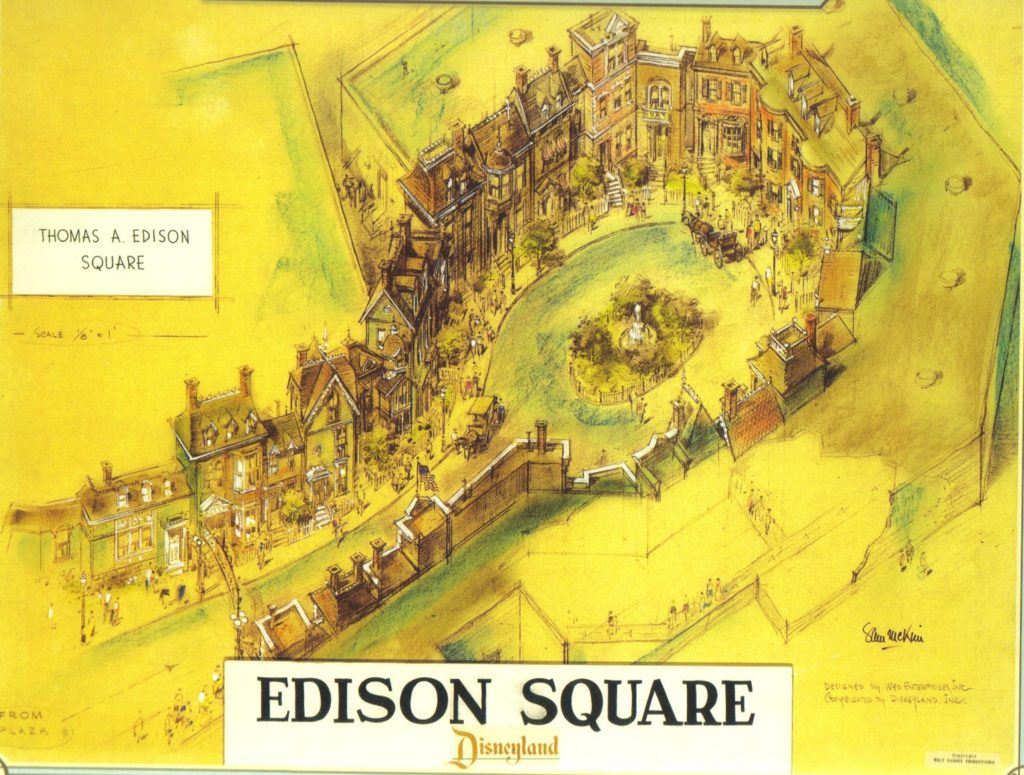
According to the detailed plans for the land (wonderfully preserved by DisneyDocs.net in a 1958 proposal), Edison Square would propel guests forward in time and from small town Midwest America into the big city, with facades designed to resembled Chicago’s greystones, wooden San Francisco, red-brick Boston, and New York’s brownstones in a timeless cul-de-sac.
There in the roundabout’s center would reside Progress Park, built around a new bronze statue of American inventor and businessman Thomas Edison himself. With 1,093 patents to his name (including the invention of the lightbulb, power utilities, the motion picture camera, and the phonograph), it makes sense that Thomas Edison would be held in the kind of esteem Walt otherwise reserved only for Abraham Lincoln…
Indeed, Edison was a figure worthy of celebration in the eyes of industrialist and optimist Walt. And it didn’t hurt that Edison was also the founder of General Electric – by the 1950s, a leading national power and technology company – who was excited about the idea of sponsoring an entire land at Disneyland. Luckily, GE had high hopes for Edison Square, and particularly for its would-be headlining attraction…
Harnessing the Light
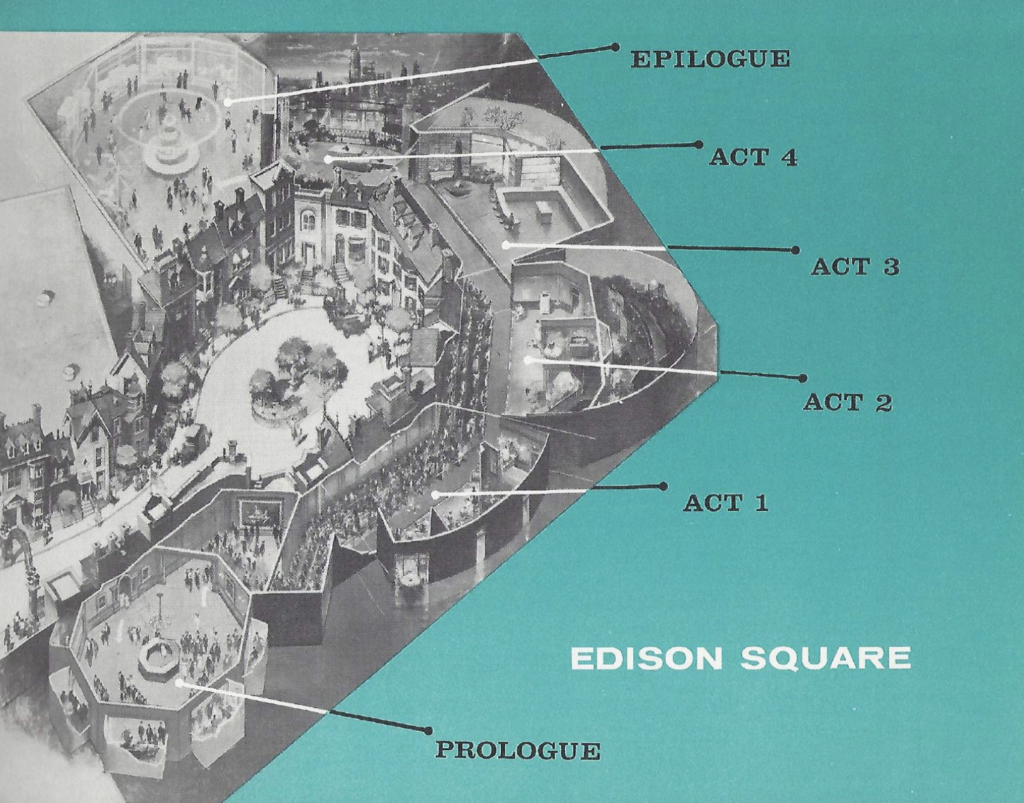
Cleverly concealed behind the cul-de-sac of facades forming Edison Square, General Electric’s Harnessing the Light would have been a state-of-the-art attraction and a product showcase for GE. Guests would enter into a prologue exhibit space about Edison and his discoveries, milling about in a museum of invention… until a set of automatic doors opened, leading them into a tiered, standing theater. Along three staggered standing levels, guests would gaze out over a set recreating the typical American home as it appeared in 1898 – just before electricity made its way into the living room.
The lovable Wilbur K. Watt, happily rocking in his chair, would show guests around, pointing out how the stove, icebox, and phonograph are all marvels of innovation, though they’re all human powered. Wilbur himself wouldn’t be much more advanced… a simple “electro-mechanical” figure, he’d only be able to perform repetitive actions controlled by simple machines (think of 1955’s Jungle Cruise animals).
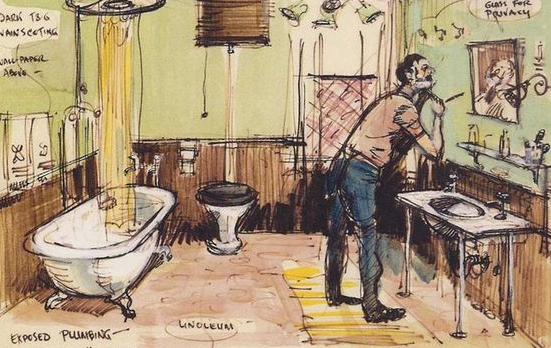
After three minutes or so, another set of doors would open to the left, leading guests ahead into the next theater – the same home 20 years later, in 1918. There, guests would see what a difference Edison’s incandescent wonders had made… mostly by way of bundles of wires crudely strung through the home, leading to once-unthinkable luxuries like heaters, radios, refrigerators, lightbulbs, and other early appliances.
In this “copper wire jungle,” Wilbur K. Watt would introduce guests to this curious collection of new wonders and the “invisible servant” of electricity making it possible.
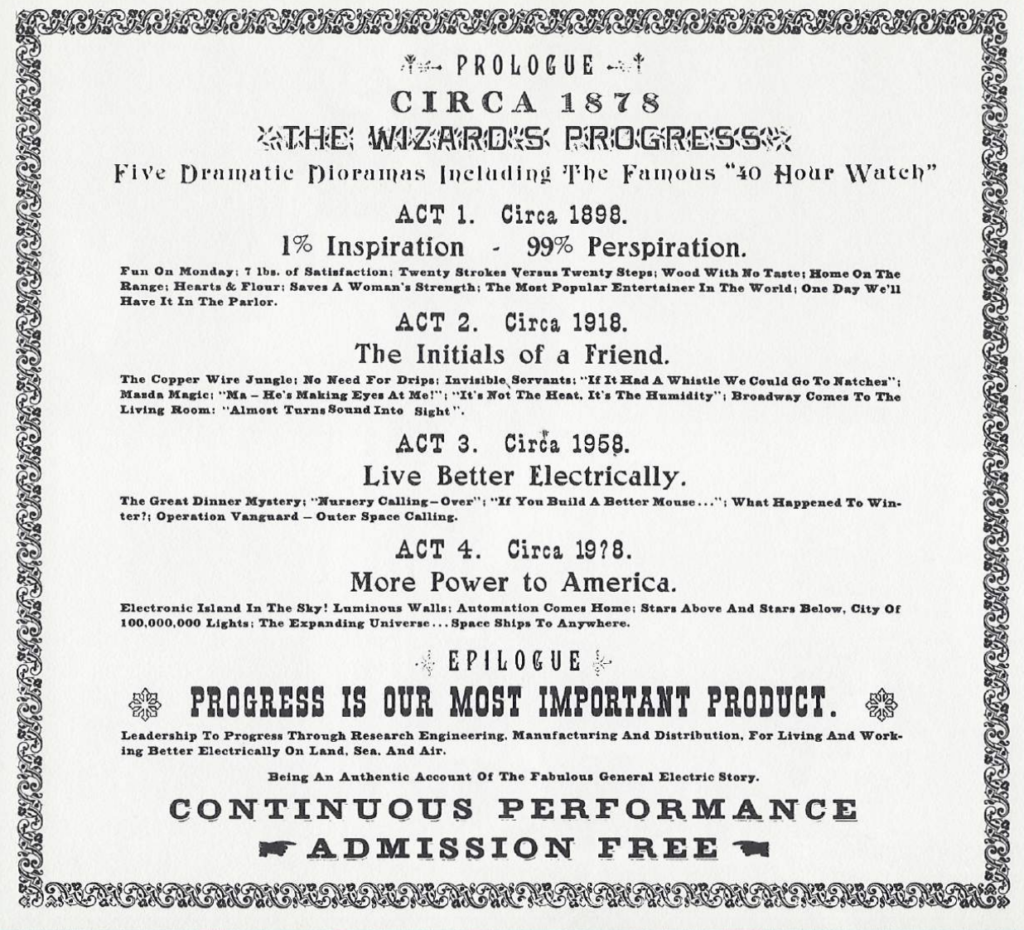
Three minutes later, it’s “exit stage right,” passing through time again to 1958 (the “present” when Harnessing the Light would open) showcasing then-modern household marvels of climate-control, television, microwave opens, and more. Just look at the wonders of General Electric and its place in the modern American story!
Finally, guests would pass into a fourth scene, representing the home of the future: luminous walls, prototype personal computers, space scanners, and more! In this final scene, guests would be invited onto the stage to explore the possibilities of progress up close and hands-on…
Of course, tomorrow is still but a dream. For now, the doors to the left would open again, this time ushering guests into an epilogue exhibit showcasing General Electric appliances available for sale here and now.
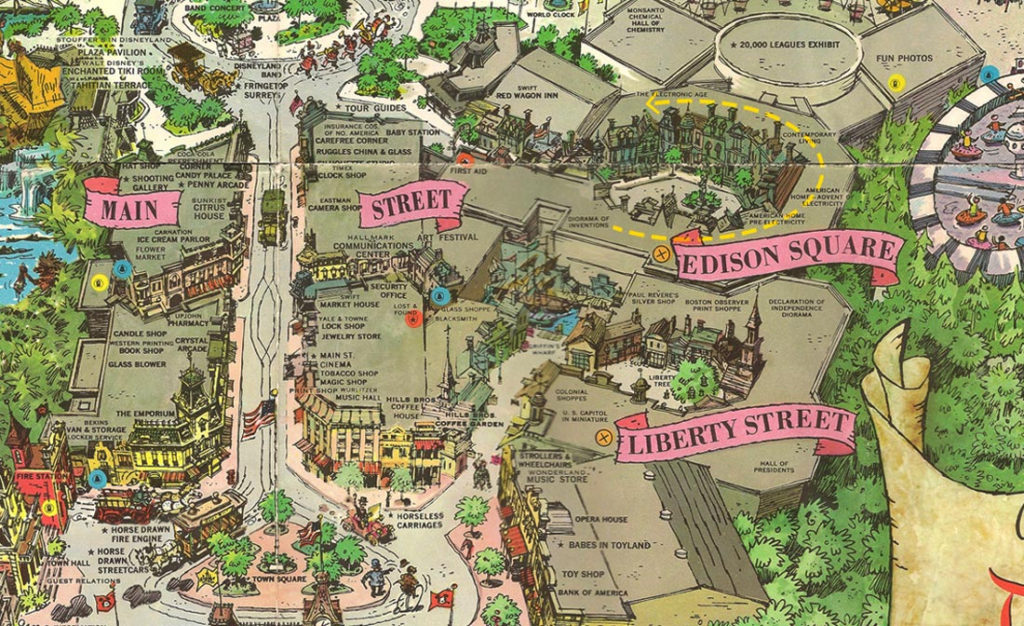
At its heart, Harnessing the Light was about progress, and the hopes and fears that always accompany it. Passing from theater to theater, guests would’ve gotten a sense of just how much life had changed for the average American family in the last sixty years, and how the innovations of General Electric had made life simpler and sweeter. It seemed perfectly positioned as a must-have addition at Disneyland.
Of course, it was never built. That’s why all of Edison Square and its colonial neighbor, Liberty Street, made it into our list of never-built lands we wish we could see in person. But why did Disney drop the concept?
Rethinking tomorrow
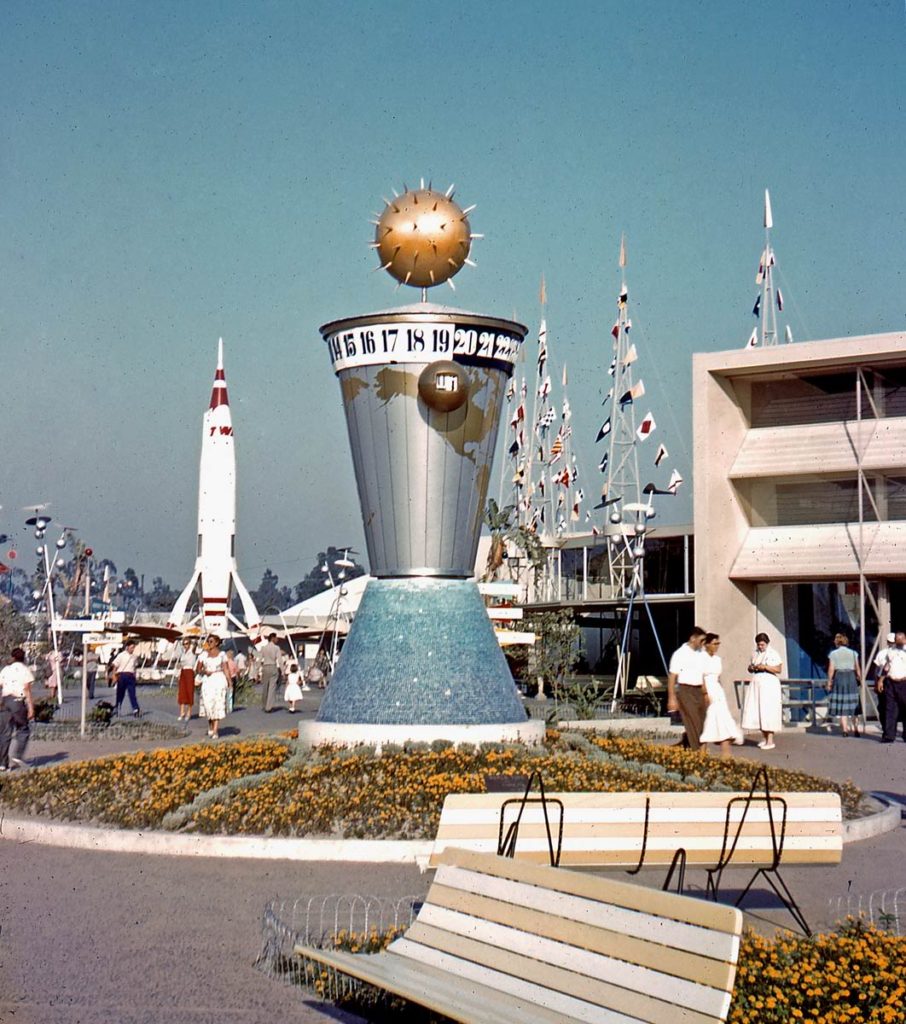
In the late 1950s, WED Enterprises (today called Disney Imagineering) had a lot on its plate. Opportunities for growth at the young Disneyland were countless, and Edison Square was one of many ideas floated for the park. Certainly, its focus on the future would’ve made it a pet project of Walt’s… except that he had a bigger future-fish to fry.
“A vista into a world of wondrous ideas, signifying Man’s achievements… A step into the future, with predictions of constructed things to come. Tomorrow offers new frontiers in science, adventure and ideals. The Atomic Age, the challenge of Outer Space and the hope for a peaceful, unified world.”
Despite his lofty dedication at the park’s opening, Walt had not-so-secretly been disappointed with Disneyland’s Tomorrowland from the start. Early in the park’s construction, he’d actually instructed his team to abandon work on Tomorrowland entirely to focus the park’s resources elsewhere, leaving Tomorrowland for “Phase II.” But at the last minute, Walt reversed course, ordering construction east of the Hub to race ahead.
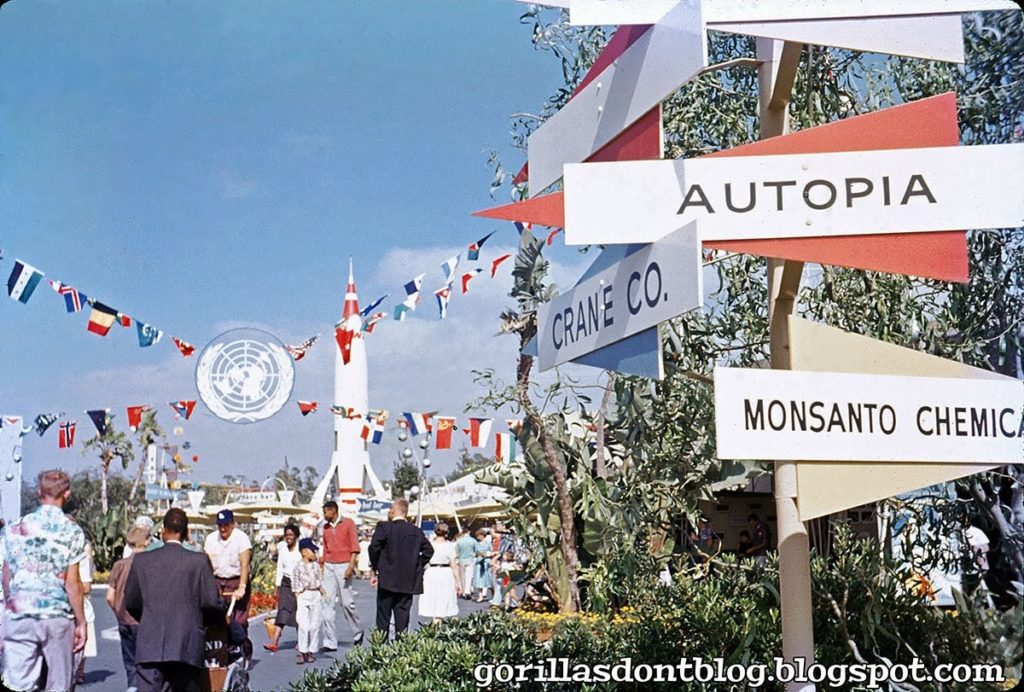
As a result, Tomorrowland in 1955 was little more than a corporate showcase with exhibit spaces rented out by companies eager to show their wares: The Kaiser Hall of Aluminum Fame; The Dutch Boy Paint Color Gallery; The Monsanto Hall of Chemistry; The Crane Bathroom of Tomorrow. Only a few of the land’s installations were produced by WED – including a hastily-made Circarama film, the “Rocket to the Mission” theater, and a walkthrough of the sets from Disney’s 1954 film 20,000 Leagues Under the Sea.
Walt famously disliked that Tomorrowland had become such a bore and was determined to think bigger. In 1957, the land welcomed something spectacular in the Monsanto-sponsored House of the Future – a cantilevered plastic home showcasing what modular, efficient living of the future might entail… And that was just the start.
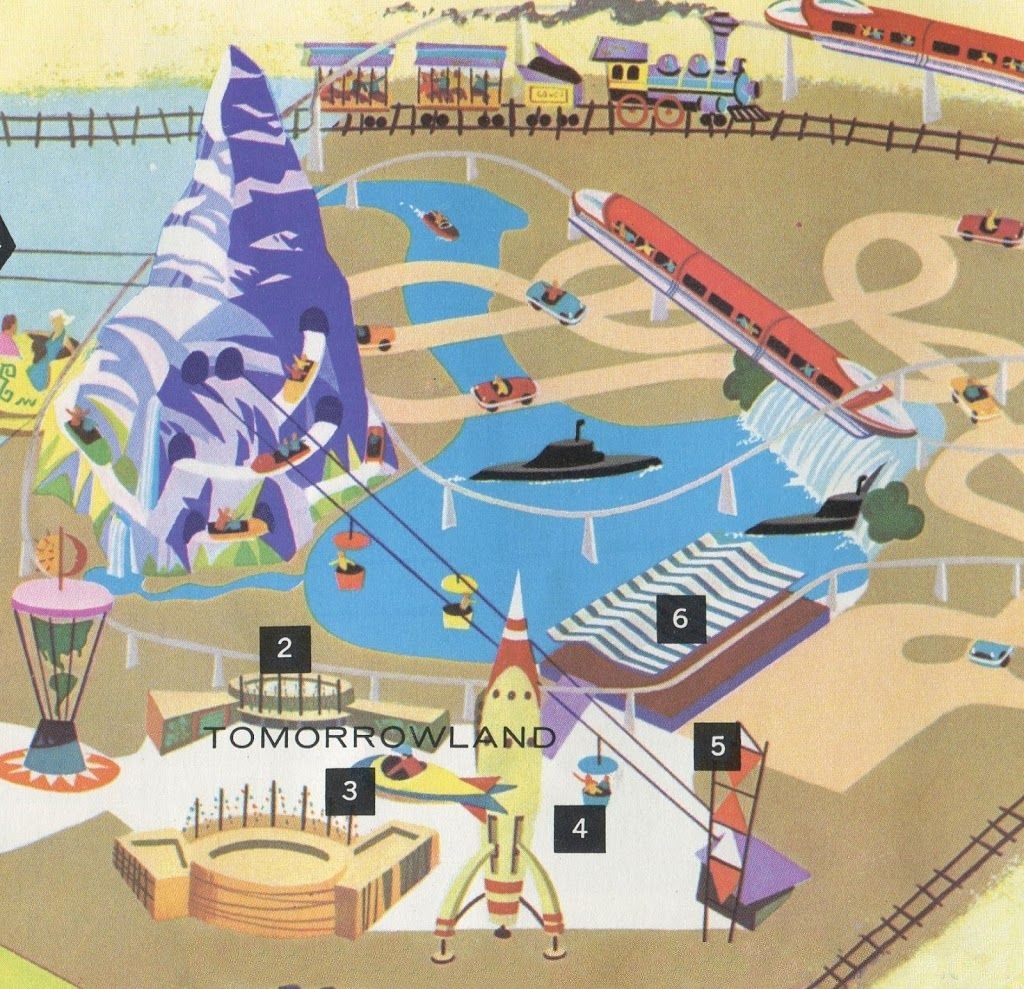
On June 14, 1959, a massive expansion to Tomorrowland opened, adding three new attractions – Matterhorn Bobsleds, Submarine Voyage, and the Disney-ALWEG Monorail – with each grand enough to earn the new E-Ticket designation created just for them. So enormous was this all-at-once unveiling, it was advertised and televised as a Re-Dedication of Disneyland!
Still, Walt was often said to comment that Tomorrowland was “still not complete,” and from that moment on, he must’ve decided to himself that sooner rather than later, the land would need a complete floor-to-ceiling rebuild…
Given all that, it’s no wonder that Edison Square never made it off the drawing board. Walt and GE reportedly agreed that, eventually, they’d build a time-traveling showcase, but that it would require some key innovations first… And luckily, WED Enterprises was about to tackle a project that would lay the groundwork for the Carousel of Progress to come…



